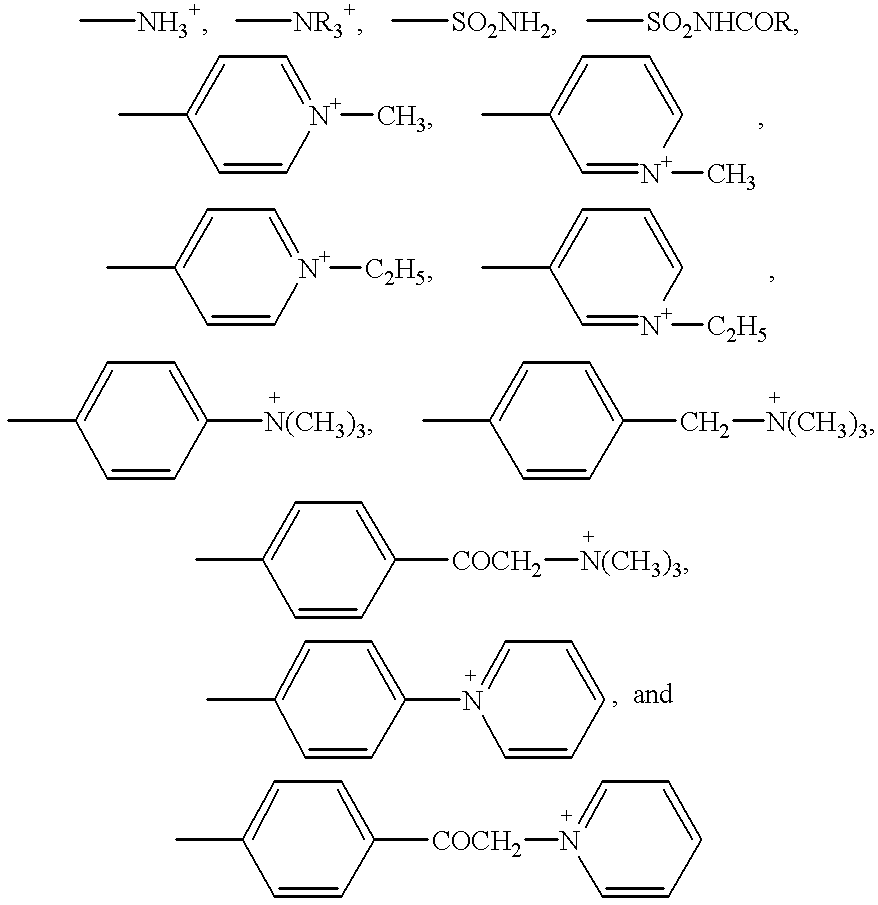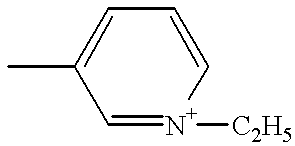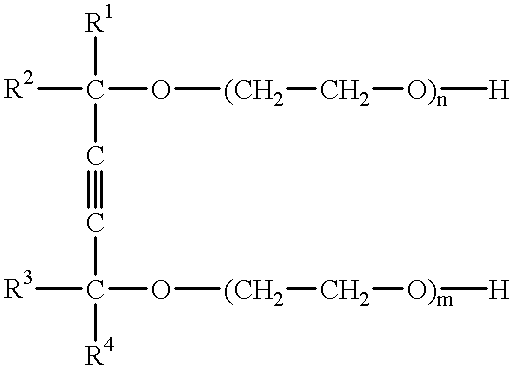Ink, ink-jet recording process, recording unit, ink cartridge and ink-jet recording apparatus
Inactive Publication Date: 2002-04-23
CANON KK
View PDF9 Cites 131 Cited by
- Summary
- Abstract
- Description
- Claims
- Application Information
AI Technical Summary
Benefits of technology
Another object of the present invention is to provide an ink-jet recording process which permits the stable formation of images excellent in water fastness and light fastness and high in quality.
A further object of the present invention is to provide a recording unit, an ink cartridge and an ink-jet recording apparatus which permit the stable provision of images excellent in water fastness and light fastness and high in quality by ink-jet recording.
By adopting the above-described respective constitutions according to the present invention, there can be brought about an effect that images excellent in fastness properties such as water fastness and light fastness and high in quality can be stably formed in ink-jet recording.
First of all, the printing environment in the present invention includes various factors. In particular, in the same head, some nozzles may eject an ink in a considerably great amount, and other nozzles may scarcely eject the ink according to recording conditions upon printing. Such a difference in ejection quantity between nozzles is also considered as a printing environment. The present inventors have carried out various investigations as to a phenomenon that the ejection quantity of an ink varies with nozzles even under the same preset conditions in the apparatus when printing environments differ from each other. As a result, it has been newly found that the ejection quantity of an ink varies according to the form of a film of a pigment formed on the surface of a heater upon ejection of a pigment ink by a bubble jet system (system that thermal energy is applied to the ink using the heater to eject the ink from an orifice), and a difference between ejection quantities of the ink ejected from respective orifices reduces as a difference in form between films formed on respective heaters lessens, and that impurities in a pigment ink comprising self-dispersing carbon black to the surface of which at least one hydrophilic group is bonded through another atomic group, particularly, impurities derived from the self-dispersing carbon black to the surface of which at least one hydrophilic group is bonded through another atomic group participate in ejection stability. It is thus considered from these findings that the effect of the present invention is achieved by the following action.
Namely, for example, in the ink-jet recording system that thermal energy is applied to an ink to eject the ink, voltage is applied to a heater to rapidly heat the heater, whereby the ink adjacent to the surface of the heater reaches the limit of heating to generate bubbles, thereby ejecting the ink. The generation of bubbles tends to be affected by the condition of the heater surface, and so the ejection of the ink is greatly influenced by the condition of the heater surface. In the pigment ink according to the present invention, a stable film of a pigment can be rapidly formed on the surfaces of the respective heaters by the interaction between calcium and the above-described impurities in the pigment ink so far as the ink is more or less ejected from all nozzles. The film is always stably present irrespective of the ejection quantity of the ink after this, so that the forms of the pigment films on the respective heaters become substantially the same irrespective of the quantity of the ink ejected from the respective nozzles. As a result, the ejection quantities from the respective nozzles become substantially the same, and so variation in ejection quantity between the respective nozzles with recording environment is also narrowed.
Problems solved by technology
In particular, in the same head, some nozzles may eject an ink in a considerably great amount, and other nozzles may scarcely eject the ink according to recording conditions upon printing.
Method used
the structure of the environmentally friendly knitted fabric provided by the present invention; figure 2 Flow chart of the yarn wrapping machine for environmentally friendly knitted fabrics and storage devices; image 3 Is the parameter map of the yarn covering machine
View moreImage
Smart Image Click on the blue labels to locate them in the text.
Smart ImageViewing Examples
Examples
Experimental program
Comparison scheme
Effect test
example
Components set forth in Table 1 shown below were mixed and thoroughly stirred into a solution. The resultant solution was then filtered under pressure through a microfilter (product of Fuji Photo Film Co., Ltd.) having a pore size of 3.0 .mu.m, thereby preparing an ink according to the present invention.
the structure of the environmentally friendly knitted fabric provided by the present invention; figure 2 Flow chart of the yarn wrapping machine for environmentally friendly knitted fabrics and storage devices; image 3 Is the parameter map of the yarn covering machine
Login to View More PUM
 Login to View More
Login to View More Abstract
An ink comprising particles of self-dispersing carbon black having at least one hydrophilic group at the surface thereof, and calcium in an aqueous medium. The ink can form images excellent in fastness properties such as water fastness and light fastness and character quality, and can be stably ejected from a recording head irrespective of printing environment.
Description
1. Field of the InventionThe present invention relates to an ink, an ink-jet recording process, a recording unit, an ink cartridge and an ink-jet recording apparatus.2. Related Background ArtWith the spread of ink-jet recording systems, it is advanced to improve the quality and fastness properties of prints. With respect to fastness properties of prints, for example, water fastness, Japanese Patent Application Laid-Open No. 4-226175 and U.S. Pat. No. 5,053,495 disclose novel black dyes and inks which can provide images having good water fastness.Black inks using a pigment have been reported to form black images excellent in print quality and fastness properties such as water fastness and light fastness on plain paper. For example, Japanese Patent Application Laid-Open No. 5-179183 discloses a pigment ink stabilized with a block polymer of the AB or BAB type. Japanese Patent Application Laid-Open No. 6-136311 discloses a pigment ink which comprises a block polymer composed of a hydro...
Claims
the structure of the environmentally friendly knitted fabric provided by the present invention; figure 2 Flow chart of the yarn wrapping machine for environmentally friendly knitted fabrics and storage devices; image 3 Is the parameter map of the yarn covering machine
Login to View More Application Information
Patent Timeline
 Login to View More
Login to View More IPC IPC(8): B41J2/01C09D11/00
CPCC09D11/324B41J2/01
Inventor OSUMI, KOICHIMISHINA, SHINYASANADA, MIKIOTERAOKA, HISASHI
Owner CANON KK
Features
- R&D
- Intellectual Property
- Life Sciences
- Materials
- Tech Scout
Why Patsnap Eureka
- Unparalleled Data Quality
- Higher Quality Content
- 60% Fewer Hallucinations
Social media
Patsnap Eureka Blog
Learn More Browse by: Latest US Patents, China's latest patents, Technical Efficacy Thesaurus, Application Domain, Technology Topic, Popular Technical Reports.
© 2025 PatSnap. All rights reserved.Legal|Privacy policy|Modern Slavery Act Transparency Statement|Sitemap|About US| Contact US: help@patsnap.com



